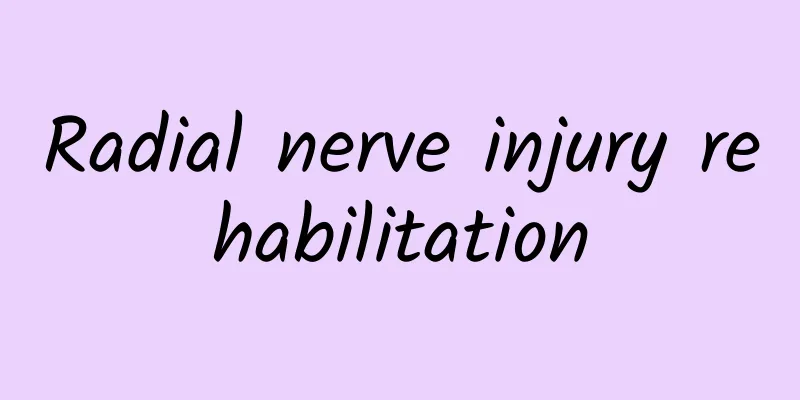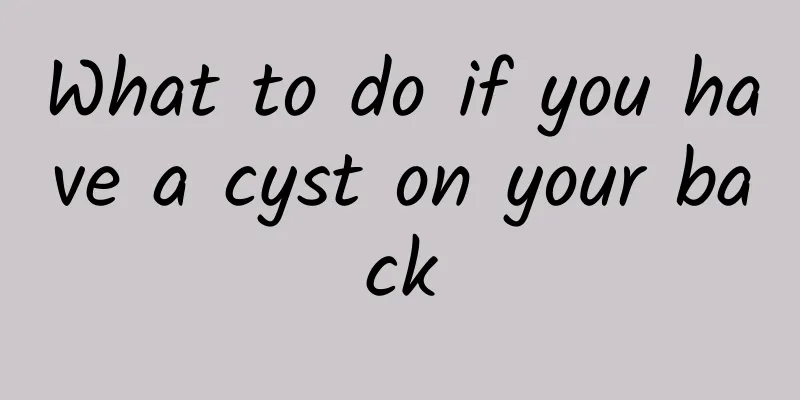Radial nerve injury rehabilitation

|
Rehabilitation treatment for radial nerve injury is very important. Appropriate flexion and extension exercises should be performed to restore its function. Over time, the amount of activity can be gradually increased and the intensity of activity can be increased, so that normal function can be gradually restored. Massage can also be used to achieve the purpose of rehabilitation. Let us now take a closer look at the rehabilitation treatment of radial nerve injury. Diagnostic criteria Symptoms and signs of radial nerve injury: wrist drop on the injured side, inability to dorsiflex the thumb, weakness in straightening the four fingers, decreased or absent pain sensation in the base of the thumb; electromyography examination as a Basis of diagnosis.Assessment Method Motor function assessment: Hand motor function was assessed with reference to the sensory function recovery assessment form after peripheral neuropathy. Grade 0 (M0): no muscle contraction; Grade 1 (M1): contraction of the proximal muscles is visible; Grade 2 (M2): Contraction is visible in both proximal and distal muscles; Level 3 (M3): All important muscles can contract against resistance; Level 4 (M4): Able to perform all movements, including independent and coordinated movements; Level 5 (M5): Completely normal. Sensory function assessment: The sensory function was assessed using the British Medical Association's 1954 sensory function recovery scale after peripheral neuropathy. Grade 0 (S0): No recovery is felt; Grade 1 (S1): deep sensation of the skin in the innervated area is restored; Grade 2 (S2): superficial sensation and tactile sensation in the innervated area are partially restored; Grade 3 (S3): Skin pain and touch sensations are restored and hyperesthesia disappears; Level 4 (S3+): The sense reaches the S3 level, and the two-point discrimination sense is partially restored; Level 5 (S4): Fully recovered. Treatment For patients who seek treatment 1 to 4 weeks after acupuncture treatment, the patient should sit with the injured upper limb bent at the elbow, and the acupoints selected are: Quchi, Shousanli, Lieque, and Hegu. After the needles are inserted and the Qi is obtained, the electrotherapy device is used to stimulate the Quchi and Shousanli acupoints with electricity. The degree of stimulation is determined by the patient's tolerance. The sparse and dense waves are selected. It is done once a day, 20 minutes each time, and 10 times constitute a course of treatment. After one course of treatment, rest for 3 days in between and then start the second course of treatment. For patients who visit the hospital more than 4 weeks after surgery and those who have been treated for more than 4 weeks: select acupoints as before, and after the needle is inserted to obtain qi, use the method of equal tonification and equal drainage. Insert a clean moxa stick into the needle handle, and warm moxibustion each acupoint after lighting it, and stop when the skin flushes. Functional exercise needs to be persisted for a long time, and should be done 4 times a day at certain intervals, each time for 30 minutes. Exercise method: Place the palms of both hands together, use the healthy limb to lead the affected limb to do wrist and finger dorsiflexion exercises, thumb abduction and dorsiflexion exercises, finger adduction and abduction exercises, thumb opposition and palm function training, forearm rotation function training, and interphalangeal, metacarpophalangeal and wrist joint flexion function training. Within one month after the operation, the injured limb should be fixed in the dorsiflexion position of the wrist and fingers with a plaster splint after each treatment. After one month, an elastic extension brace for the wrist and finger joints can be used, which can not only control the wrist and fingers in the extended position, but also train the flexion function of the hand. Rehabilitation Stretch your wrist. Those with muscle strength reaching level 2-3 can train on their own. 1. Wrist extension exercise (1) Place the affected hand on the table with the thumb on top and the little finger on the bottom, and bend the wrist slightly. Place an object on the back of the hand and push the object away when you extend your wrist. (2) Sit on a small stool and use the back of your affected hand to push the ball against an object in front of you, such as a bottle. 2. Finger extension exercises (1) A family member holds the affected hand with one hand, and with the other hand, rubs the back of the forearm from the elbow to the fingertips with force and speed. When rubbing the back of the hand, slightly push downward, and then rub the fingers quickly. This can relieve the spasm of the finger flexor muscles and promote finger extension. (2) Place the affected hand in cold water with crushed ice, with the family member also placing their hand in to help prevent frostbite. Soak for 3 seconds each time and repeat this exercise 3 times. This exercise can inhibit spasms in the finger flexor muscles. (3) Family members hold the patient's hand and ask the patient to gently hold the bottle brush. Then pull the brush out of the patient's hand. Repeating this several times can stimulate finger extension. Although radial nerve injury is not a common or frequently occurring disease, it can occur in various coma and lethargy situations. After the injury, the wrist and finger extension functions are severely impaired. If it is not treated for a long time, it can lead to contracture of the forearm and hand extensor muscles, resulting in loss of function of the affected limb, and reducing the patient's daily life and work ability. |
<<: How to recover from long-term excessive hand floating
>>: Rehabilitation after Achilles tendon surgery
Recommend
What is the cause of water coming out of the belly button?
There are two main reasons for water discharge fr...
Symptoms of ophthalmoplegia, diagnosis of ophthalmoplegia
Ophthalmoplegia is a disease that many people are...
Chinese medicine formula for sperm production
Male reproductive health is a very important matt...
What are the effects and functions of vinegar tortoise shell
Generally speaking, the effects of Chinese medici...
Causes of high rheumatoid factor
Everyone should know something about rheumatoid. ...
What are the differences between pseudo-body odor and body odor?
Summer is coming again. In summer, many people ar...
Things to note when taking a bath frequently
Many of us take a bath frequently, especially in ...
The efficacy and function of Yagda
Yagda is also known as Wenpu, Northern Xinjiang r...
Why does sperm turn yellow?
Men's sperm health needs attention because it...
What injection is good for eczema
Eczema is a disease that occurs on the surface of...
Does masturbation cause frequent urination? What are the symptoms of excessive masturbation?
Many people, when they are young, have obvious se...
What causes cheekbone pain?
No one is perfect. In life, everyone has various ...
What are the benefits of blind massage?
Massage is a traditional Chinese medicine health-...
The efficacy and action points of Forsythia suspensa
Speaking of lotus forsythia, I believe many peopl...
How to treat cervical ankylosis
Many people are not particularly familiar with ce...









